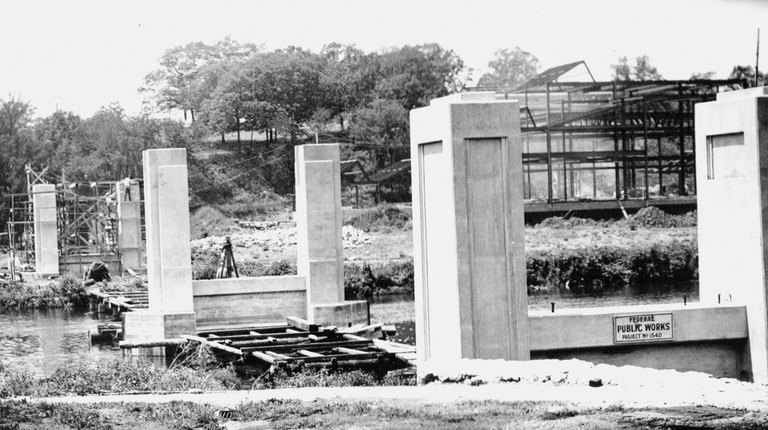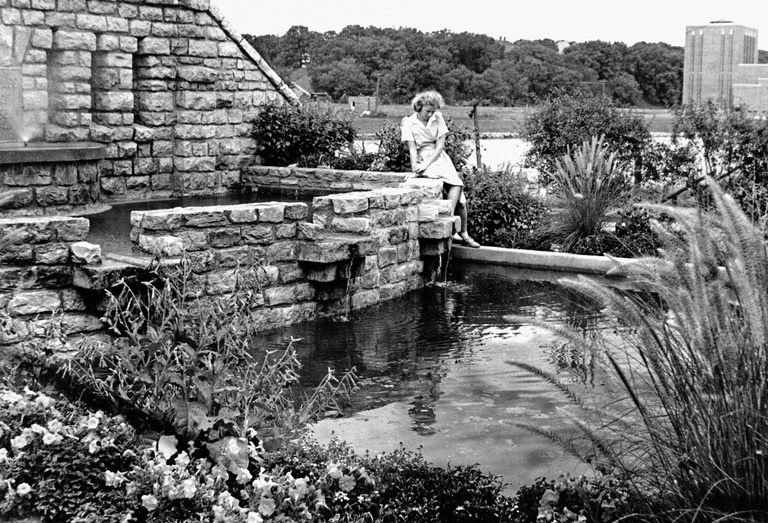(Editor’s note: The Old Gold series provides a look at University of Iowa history and tradition through materials housed in University Archives, Department of Special Collections.)
As Old Gold writes this, the rising and temperamental Iowa River is easing off a bit, laying to rest—for now, at least—our worst fears of another flood in Iowa City. Preparations are under way, though, in case the water rises.
Flooding divides communities, but bridges bring them together. The Flood of 2008 forced the closure of the Iowa Memorial Union Footbridge for more than a year, but it didn’t stop the Depression-era structure entirely—a sign of strength and hope for a beleaguered campus in the aftermath of the worst natural disaster in its 161-year history.

The footbridge, alternately known as the Fine Arts Bridge, was constructed in 1934 with funds provided by the Works Progress Administration, the largest and arguably most ambitious federal agency created by the administration of President Franklin D. Roosevelt.
By the early 1930s, the campus expanded substantially west of the river, including the university’s new fine arts complex, the College of Medicine, and what would later become one of the nation’s largest public teaching hospitals. To accommodate this growth, university president Walter Jessup envisioned a footbridge to link the original campus with the new.

Designed by Ned L. Ashton, an Iowa City consulting engineer and, later, a member of the College of Engineering faculty, and George Horner, university architect, the bridge was constructed of concrete using granite aggregate for greater durability. The general contractor was Stark Construction Company of Cedar Rapids. Its three spans—two approaches and a center section—are a combined 410 feet in length. To minimize obstruction of the Iowa River, the piers are parallel to the way the river flows, an innovative design at the time of construction. A fountain was later constructed on the east end of the bridge as a memorial to the Class of 1936.
“Common bond between generations of Iowa students is the beautiful Iowa River, furnishing rich natural beauty in the center of the university campus. Union Footbridge, which leads from Iowa Union to the Fine Arts group, is the connecting link between the East campus and the West.”
–Highlights of Iowa, University of Iowa Publication New Series No. 1006; Sept. 24, 1938.